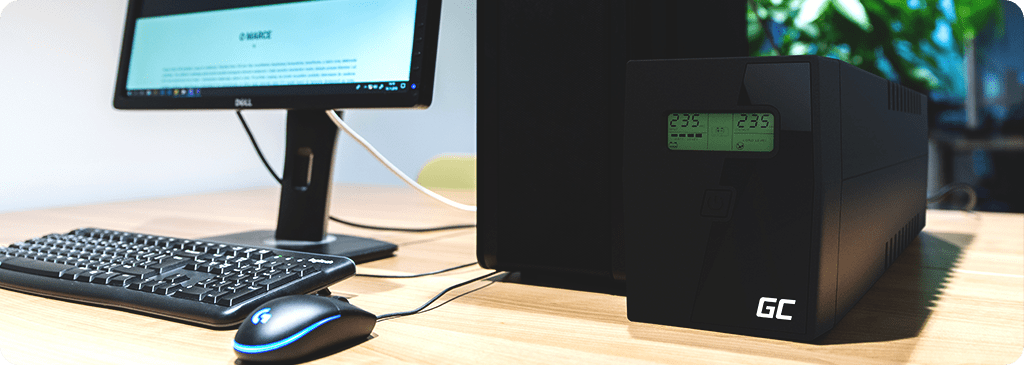UPS (Uninterruptible Power Supply) is a device whose main function is to maintain voltage and ensure safe operation of devices in case of a power failure. When choosing the right UPS, you have to follow different guidelines. Don’t worry, it is not complicated, and in this article we will help you to find the right model step by step.

Types of UPS
Uninterruptible power supplies can be divided into two large groups: Online and Offline. These solutions are quite different from each other, which makes them quite different in application.
Online devices
Online UPSs are mainly characterized by the fact that they are active all the time. During operation, the device is based on a separate circuit at the output, so that all the interference generated by the network is eliminated. This translates into safer operation of devices, especially those that are sensitive to slight voltage deviations. This type of UPS is usually used in server applications where the device cannot be exposed to unstable operation. Thanks to this solution, the switching time to battery power in case of failure is instantaneous.


As a disadvantage of this type of devices we can certainly count the fact that the device works all the time, regardless of the situation. This is due to the fact that it generates noise and at the same time needs an appropriate cooling system, and the operating costs are high. Additionally, it is worth mentioning that devices of this type often have a “bypass” function – thanks to which it is possible to force the output power to be transmitted directly from the mains.


Line Interactive devices
Compared to their predecessors, offline devices power the devices directly from the mains, they switch to battery power only when a power failure or voltage instability of more than 5-10 ms is detected. However, it is still sufficient protection against sudden shutdown of our devices. These types of power supplies are usually used in home and office applications to allow us to switch off our computer in an emergency without risking data loss.


The advantages of this type of devices include certainly lower cost of work and noise emitted only when powered by battery. The disadvantage of this solution is that it does not filter the output voltage – due to its direct transmission from the network in normal operation mode. At this point it is worth mentioning the improved Line Interactive UPS – they are characterized by voltage stabilization in case of interference – unfortunately they are only able to regulate larger voltage differences between 8 and 15%.
Which UPS for your computer, i.e. what power and capacity will you need?
One of the most important issues to consider right after the type of device is the total power of devices that will be connected to it. In order to achieve the best possible efficiency of the power supply as well as operating time, the power on one charge cycle should not exceed 80% of the efficiency of the device. For example, for a set of devices that consumes 400 W, we must use a UPS with a power of at least 500 W. In such a case, we have in our offer appropriate models of Green Cell Power Proof – 600 W or if we want a longer time to maintain voltage of 900 W.


The next parameter to pay attention to is the way the emergency power supply generates voltage, which is sinusoidal in shape. Most devices are able to operate when connected to UPSs with modified sine wave, an example of such a model is the already mentioned Power Proof 600 W. However, there are devices that require a clean sine wave – LCS TV sets, servers, equipment with induction motor, CO furnace pumps. In such a situation we recommend emergency power supplies – for example the 1400 W Power Proof model.
At this point one should ask oneself the last question – how long the UPS should sustain the operation of our devices. If you have a computer set that consumes about 200 W under load, with the help of the most basic models we are able to hold the computer in emergency mode for about 5 minutes.
To sum up, in order to choose the right model we have to look at several aspects of its operation. Therefore, in case you have any questions after reading this article – we invite you to contact us and we will try to choose a product that meets your needs.
Author: Michał Bródka
Related posts
Most viewed entries
- Polish Inventors Who Changed the World – Do You Know Them All?
- The Scariest Myths About Electronic Devices – Halloween 2024
- The history of bicycle – International Bicycle Day
- Electricity in a camper van on holiday – a conundrum easily solve
- Off-grid installation on a plot. Is it worth it?
- Charging your electric car at home without a wallbox

